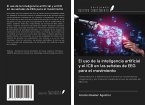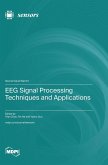This work brings a proposal of how the computer brain interface can be used in the future to improve the quality of life people who have had loss of movement of their limbs or amputations, a problem that reaches about 1.6 million people in the U.S. today, representing an annual cost to insurance companies of over $12 billion. We use EEG waves, provided by a public and extensive database, we use filtering mechanisms to acquire specific frequencies of this data, to try to predict the intention of movement with the help of machine learning tools. The results of the work regarding the classification of movements were average, however they guide us to a horizon where with the use of more reliable data and better algorithms it is possible to classify the movements with a high probability of certainty. With the selection of people with more similar characteristics and the use of neural networks, such as the recurring ones, there is a great chance of success since it would be a more standardized study, with more modern tools and guided by objective.
Bitte wählen Sie Ihr Anliegen aus.
Rechnungen
Retourenschein anfordern
Bestellstatus
Storno








